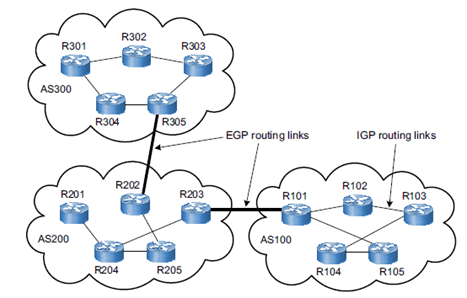What is the Open Shortest Path First (OSPF) Protocol?
OSPF stands for Open Shortest Path First, it is open standard protocol, it belongs to IGP Protocol, it is a link-state routing protocol, it sends first-time full update after that it sends a partial update. And it has an unlimited hop count limit. OSPF is used protocol number 89 and the default administrative distance (AD) is 110. If I am talking about timer in OSPF, there are three types of time in OSPF, the first hello timer is 10 sec and the second timer is hold time. It is 40 sec.it uses two types of multicast addresses one is 224.0.0.5, the second is 224.0.0.6.

224.0.0.5 is used as a multicast address for all routers when it wants to receive traffic by all routers in a domain.
224.0.0.6 is used as a multicast address for the DR router.
It is a classless routing protocol. By default, auto-summarization is disabled. By default, it can receive four equal paths to reach the same destination and it is totally dependent on the ios version, version 15.0 supports 32 equal paths. And it sends an update with a sequence number.
Why do we use OSPF?
Because OSPF is a link-state routing protocol and it means routers exchange topology information with their closest neighbors and the main advantage of link-state routing protocol is they have complete information about its topology, or you can say that it has complete knowledge of our topology.
What are the neighborship states in OSPF?

OSPF router building neighborship with the help of seven states.
- Downstate– in this state router will send a hello message to its neighbors.
- Attempt state – in this state neighborship must be configured manually, or you can say that it is used in NBMA (non broadcast multi-access) networks.
- Init state- in this state router can send and receive a hello message with our neighbors, and in the hello massage router see its own router-id.
- Two ways state- neighbors can receive and give a reply of hello massage with each other in this state.
- Ex-start state- Router will negotiate the initial seq no. of DBD and MTU size. In this state, the Router will state exchange empty DBD for master and slave elections.
- Exchange state– routers will share DBD (database Descriptor) packets with each other. And in contain LSAs, Header’s information.
- Loading state- In this, state routers will send LSR messages to each other, forget the information about the required DBD. And another router will give LSU after that received router sends back LS Ack massage.
- Full state-both routers have synchronized database successfully. And they become an adjacent neighbor to each other.
Massage type in OSPF
1. hello
2. Database Description
3. Link State Request
4. Link State Acknowledgment
5. Link State Update
In this blog, we learn what is OSPF, neighborship state, and overview of OSPF message.
In the next blog, we will learn about area types in OSPF, and Router types, requirements to form OSPF neighborship and describe messages, etc.
Zindagi Technologies, is an IT consulting company having engineers with many years of experience in planning, designing, and implementing Data Centers long with Managed IT services like cloud, cybersecurity, etc. if you want to design your network, we are just a call away. please call us on +91-9773973971 or you can drop a mail also.
Author
Anuj Kumar
Associate Consultant
